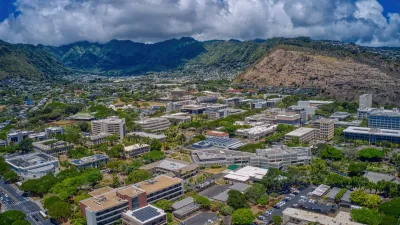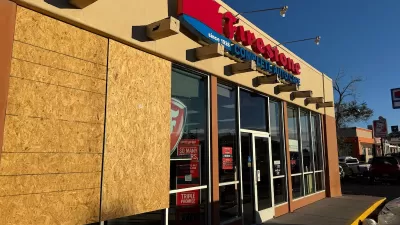In my hometown—and yours, too, I'm sure—a small, one-story house was for sale, and then it was gone. The guy who bought it promptly tore it down and then, because the new house he had designed was too big for the site, let the hole sit there for a year, a broken tooth in the 1950s neighborhood. Of course, the house he built was still too big for the lot, but there it stands, three feet from his seething neighbors: a McMansion.
In my hometown-and yours, too, I'm sure-a small, one-story house was for sale, and then it was gone. The guy who bought it promptly tore it down and then, because the new house he had designed was too big for the site, let the hole sit there for a year, a broken tooth in the 1950s neighborhood. Of course, the house he built was still too big for the lot, but there it stands, three feet from his seething neighbors: a McMansion.
This is a familiar story, almost trite by now. Some places, like the Chicago suburb of Kenilworth, Ill., have become overrun with McMansions. On one Kenilworth street of eight houses, for example, three houses have been torn down. The town has just 825 houses, many designed by big names like Daniel Burnham, Frank Lloyd Wright, and George Maher, and no laws to protect them.
So what's a small town to do? The National Register of Historic Places, after all, grants zero protection; a listing merely prevents the Feds from tearing down the building (most of the time). But the National Park Service, which oversees the register, now has a sample preservation ordinance that towns can emulate-or heck, just download. It's a great site, albeit difficult to find, all about creating preservation ordinances, which only 2,300 communities have done.
http://www.cr.nps.gov/hps/workingonthepast/roletheyplay.htm
A National Register listing does next to nothing; it's up to small towns to do something before its neighborhoods take on that freak-show look. And this NPS site seems as a good place to start as any.

Alabama: Trump Terminates Settlements for Black Communities Harmed By Raw Sewage
Trump deemed the landmark civil rights agreement “illegal DEI and environmental justice policy.”

Planetizen Federal Action Tracker
A weekly monitor of how Trump’s orders and actions are impacting planners and planning in America.

Why Should We Subsidize Public Transportation?
Many public transit agencies face financial stress due to rising costs, declining fare revenue, and declining subsidies. Transit advocates must provide a strong business case for increasing public transit funding.

Understanding Road Diets
An explainer from Momentum highlights the advantages of reducing vehicle lanes in favor of more bike, transit, and pedestrian infrastructure.

New California Law Regulates Warehouse Pollution
A new law tightens building and emissions regulations for large distribution warehouses to mitigate air pollution and traffic in surrounding communities.

Phoenix Announces Opening Date for Light Rail Extension
The South Central extension will connect South Phoenix to downtown and other major hubs starting on June 7.
Urban Design for Planners 1: Software Tools
This six-course series explores essential urban design concepts using open source software and equips planners with the tools they need to participate fully in the urban design process.
Planning for Universal Design
Learn the tools for implementing Universal Design in planning regulations.
Caltrans
Smith Gee Studio
Institute for Housing and Urban Development Studies (IHS)
City of Grandview
Harvard GSD Executive Education
Toledo-Lucas County Plan Commissions
Salt Lake City
NYU Wagner Graduate School of Public Service





























